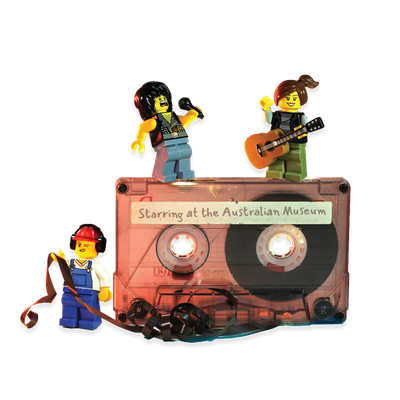Your search returned 31 results
By Page Type
By Tag
- All
- fish (966)
- blog (698)
- fishes of sydney harbour (400)
- First Nations (293)
- Blog (236)
- AMRI (169)
- archives (165)
- Aboriginal and Torres Strait Islander (135)
- Eureka Prizes (131)
- insect (126)
- Ichthyology (125)
- geoscience (109)
- minerals (102)
- climate change (98)
- podcast (94)
- Fish (91)
- Anthropology (89)
- International collections (80)
- Minerals Gallery (78)
- wildlife of sydney (78)
- Labridae (77)
- frog (73)
- gemstone (70)
- history (63)
- photography (63)
- staff (61)
- Mollusca (60)
- gem (59)
- Birds (58)
- education (57)
- Gems (56)
- Indonesia (56)
- AMplify (54)
- shark (54)
- people (53)
- exhibition (52)
- earth sciences (50)
- past exhibitions (50)
- Gobiidae (48)
- Pomacentridae (45)
- sustainability (45)
- Serranidae (44)
- science (43)
- lifelong learning (42)
- Earth and Environmental Science (41)
- Syngnathidae (41)
- Ancient Egypt (40)
- Bali (40)
- bird (40)
- dangerous australians (40)
-
Pyroclastic processes and materials
https://australian.museum/learn/dinosaurs/pyroclastic-processes-and-materials/Pyroclastic means 'fire broken' and is the term for rocks formed from fragments produced by volcanic explosions.
-
Dinosaurs unit
https://australian.museum/learn/teachers/learning/dinosaurs-ps/Follow this Dinosaurs unit to deepen your knowledge and understanding of dinosaurs and fossils.
-
Dinosaurs unit for preschools
https://australian.museum/learn/teachers/learning/dinosaurs-ey/Follow this Dinosaurs learning unit to deepen your knowledge and understanding of dinosaurs and fossils.
-
Dinosaurs: Feathers, teeth and claws
https://australian.museum/learn/teachers/at-the-museum/dinosaurs-feathers-teeth-claws/Students get hands-on with fossil evidence and apply critical thinking skills to compare features of living animals to dinosaurs.
-
Modern birds
https://australian.museum/learn/animals/birds/modern-birds/It is clear to us today what is a bird and what is not - as feathers make it difficult to confuse them with any other living animal. Many other features – such as wishbones and specialised joints in the wings – are also unique. We place birds in a major group called Aves.
-
Dinosaur - Xiongguanlong baimoensis
https://australian.museum/learn/dinosaurs/fact-sheets/xiongguanlong-baimoensis/Xiongguanlong means ‘dragon from Xiong Guan’ in Mandarin, and baimoensis is from the Mandarin for ‘white ghost’, referring to the ‘White Ghost Castle’ formation near the fossil site. This meat-eater was an early tyrannosaur that grew to about 5 metres long.
-
Dinosaur - Guanlong wucaii
https://australian.museum/learn/dinosaurs/fact-sheets/guanlong-wucaii/Named from the Chinese words guan, meaning 'crown', and long, meaning 'dragon', in reference to its flashy head-crest, the most elaborate of any known theropod dinosaur.
-
Dinosaur - Eotyrannus lengi
https://australian.museum/learn/dinosaurs/fact-sheets/eotyrannus-lengi/The relatively small tyrannosaur Eotyrannus lived about 60 million years before its more famous relative Tyrannosaurus rex.
-
Dinosaur - Alioramus altai
https://australian.museum/learn/dinosaurs/fact-sheets/alioramus-altai/Alioramus means ‘other [evolutionary] branch’ in Latin. The species name altai refers to the Altai Mountains, near the fossil site where the species was first found. This species is one of the smallest of the subfamily Tyrannosaurinae, and was about half the size of the closely-related Tyrannosaurus
-
Dinosaur - Qantassaurus intrepidus
https://australian.museum/learn/dinosaurs/fact-sheets/qantassaurus-intrepidus/Qantassaurus intrepidus, named after the Australian airline Qantas, was a small ornithopod from the Early Cretaceous of Victoria.
-
Find out more
Tails from the Coasts
Special exhibition
On now![]()
-
Find out more
Burra
Permanent kids learning space
10am - 4.30pm![]()
-
Discover more
RELICS
Special Exhibition
Opens 16 August 2025![]()
-
Discover more
Minerals
Permanent exhibition
Open daily![]()





